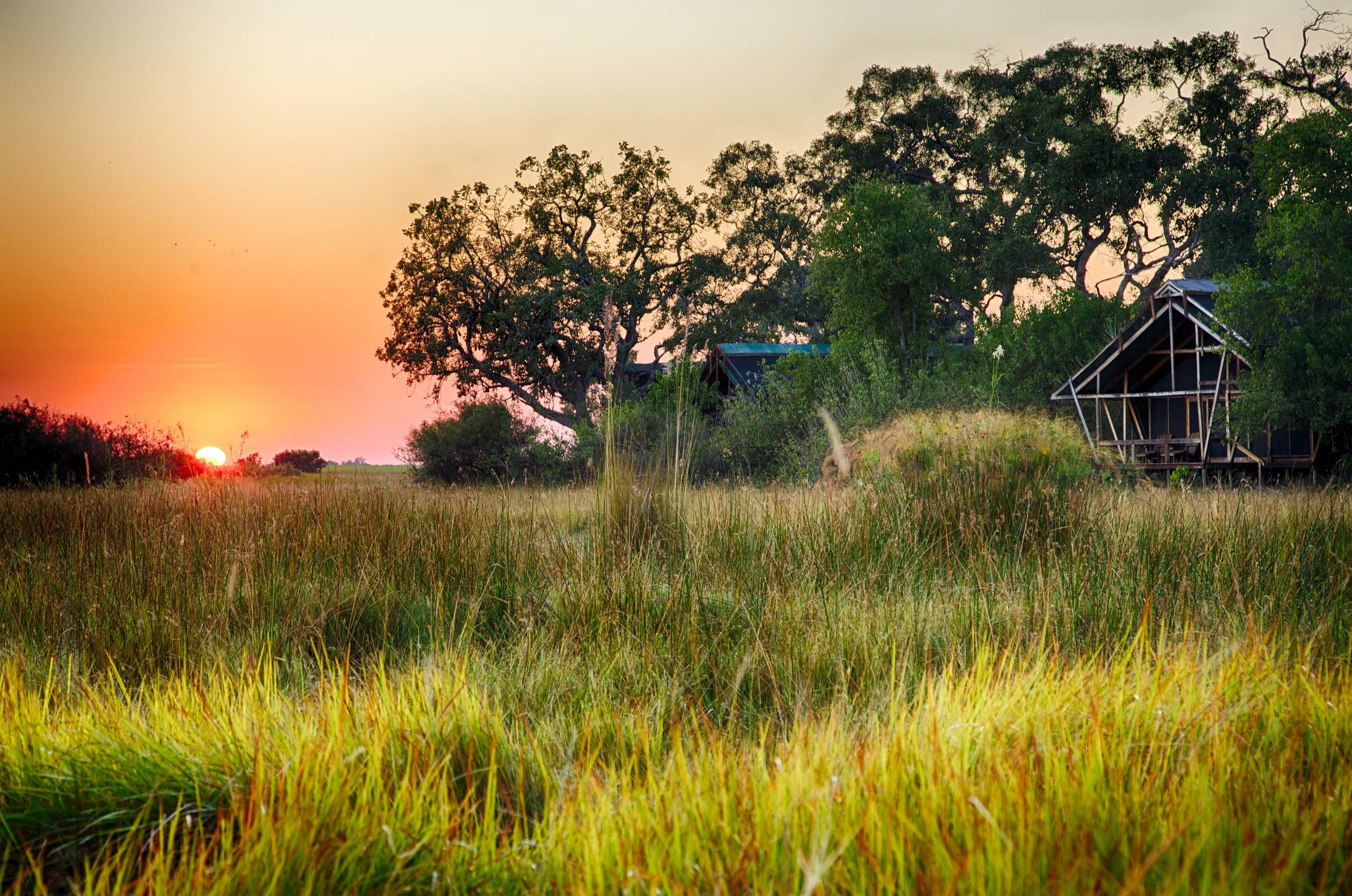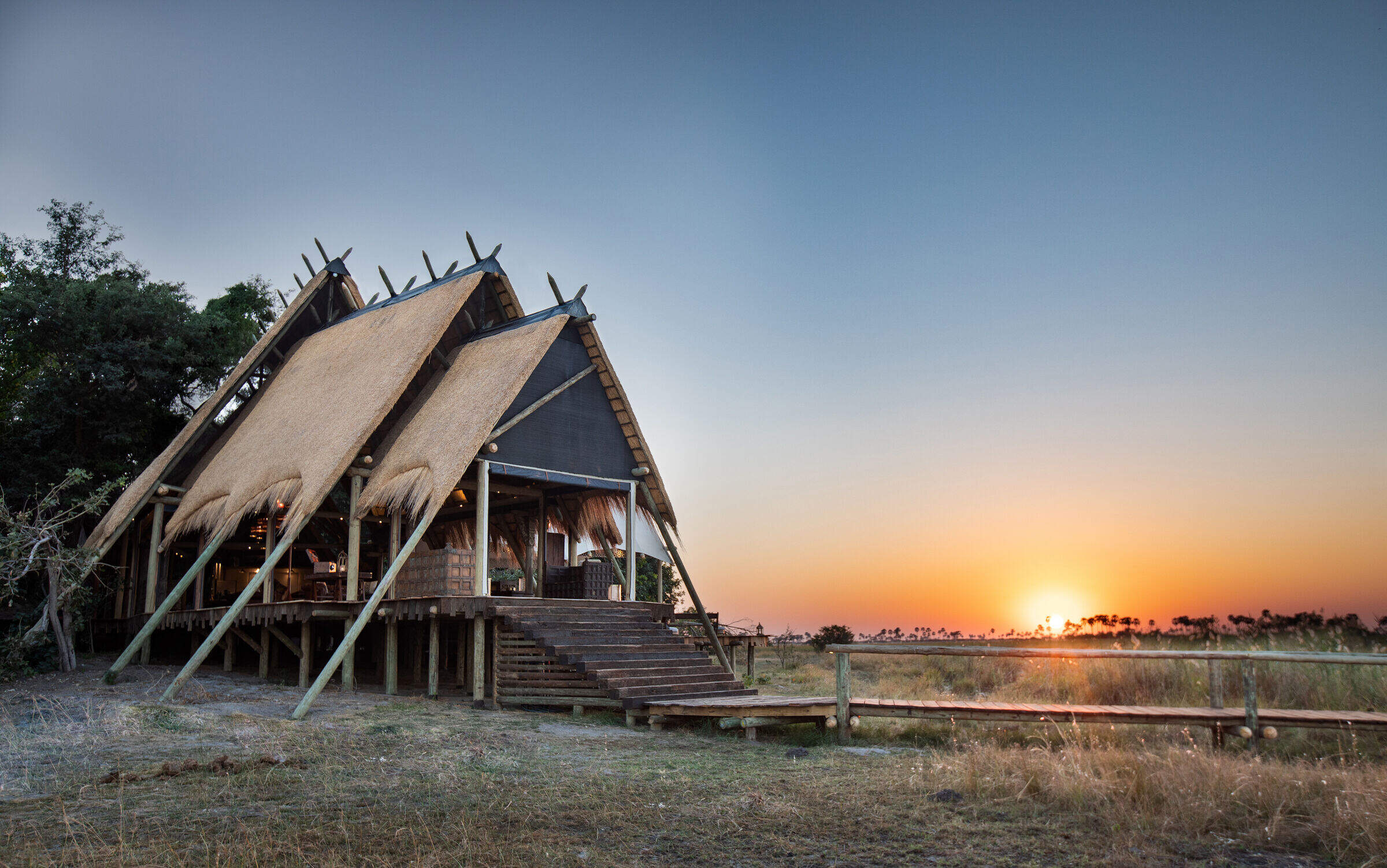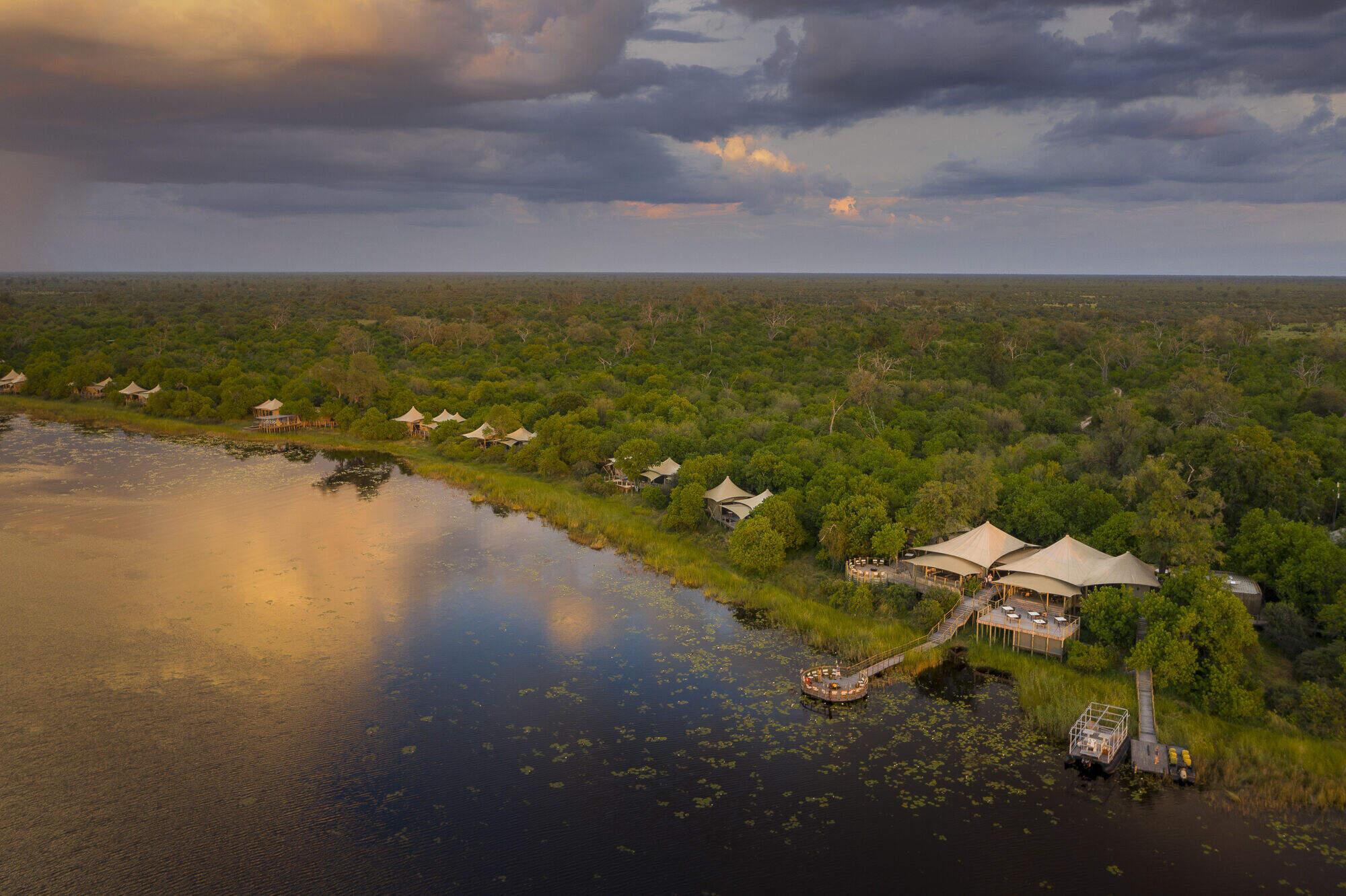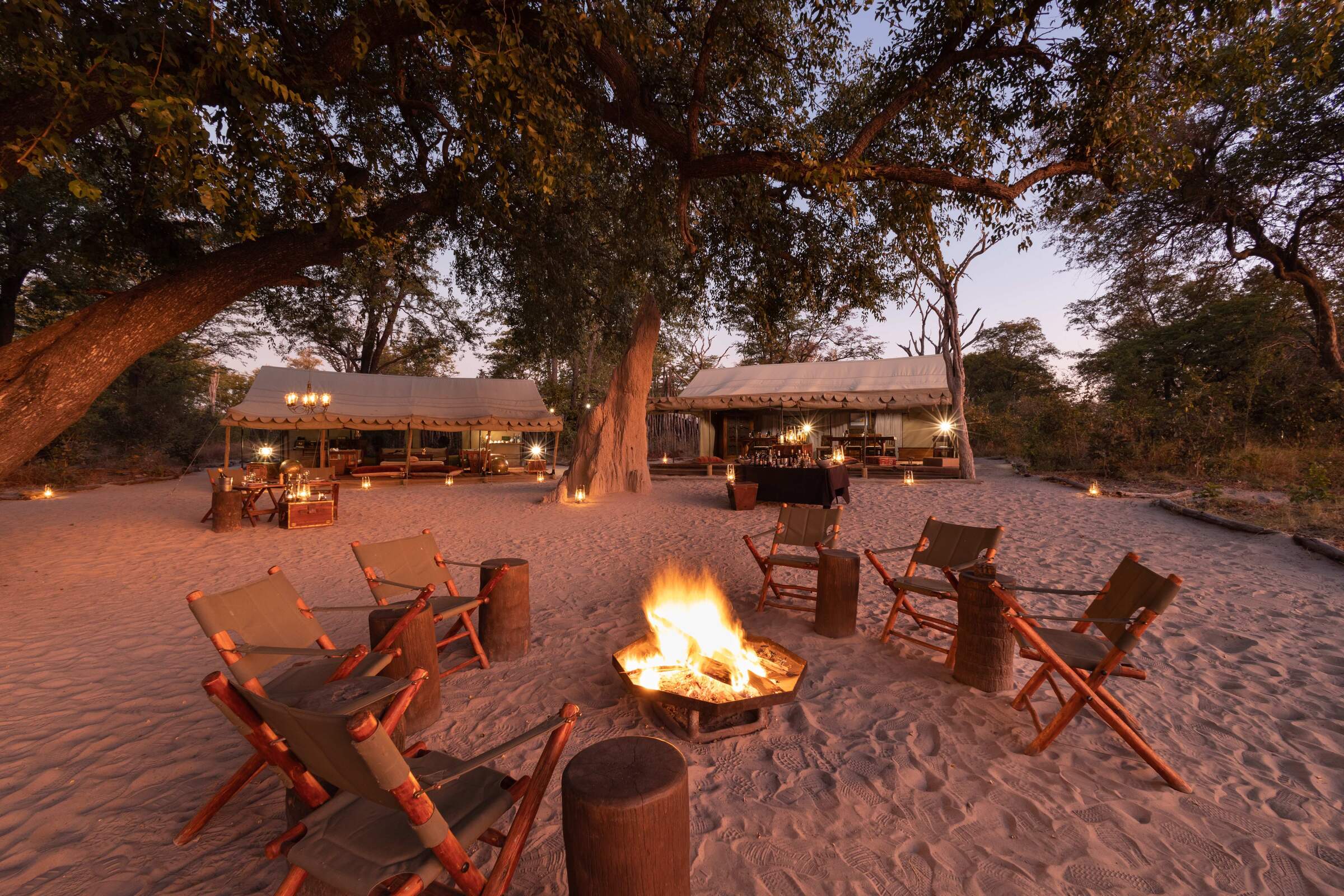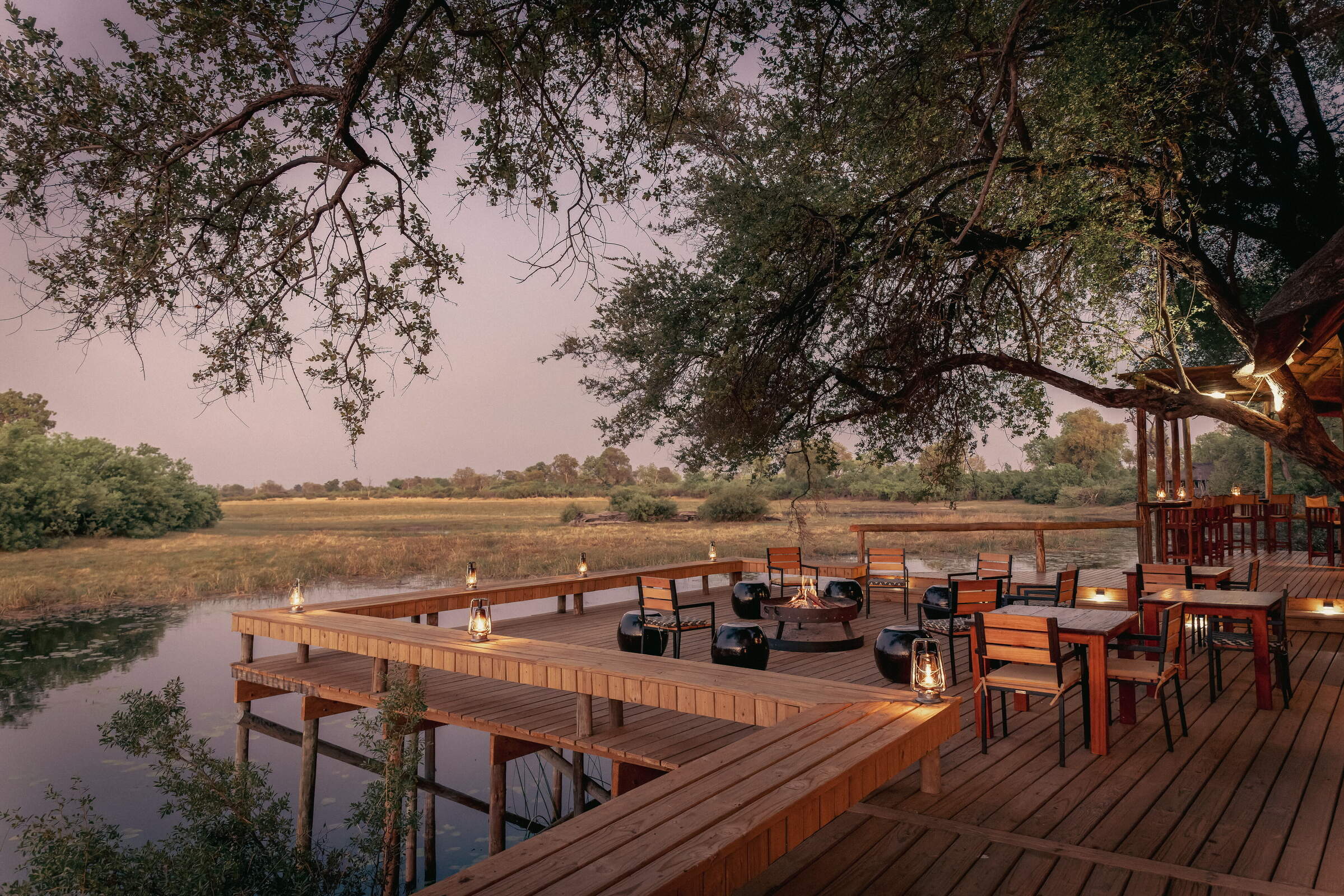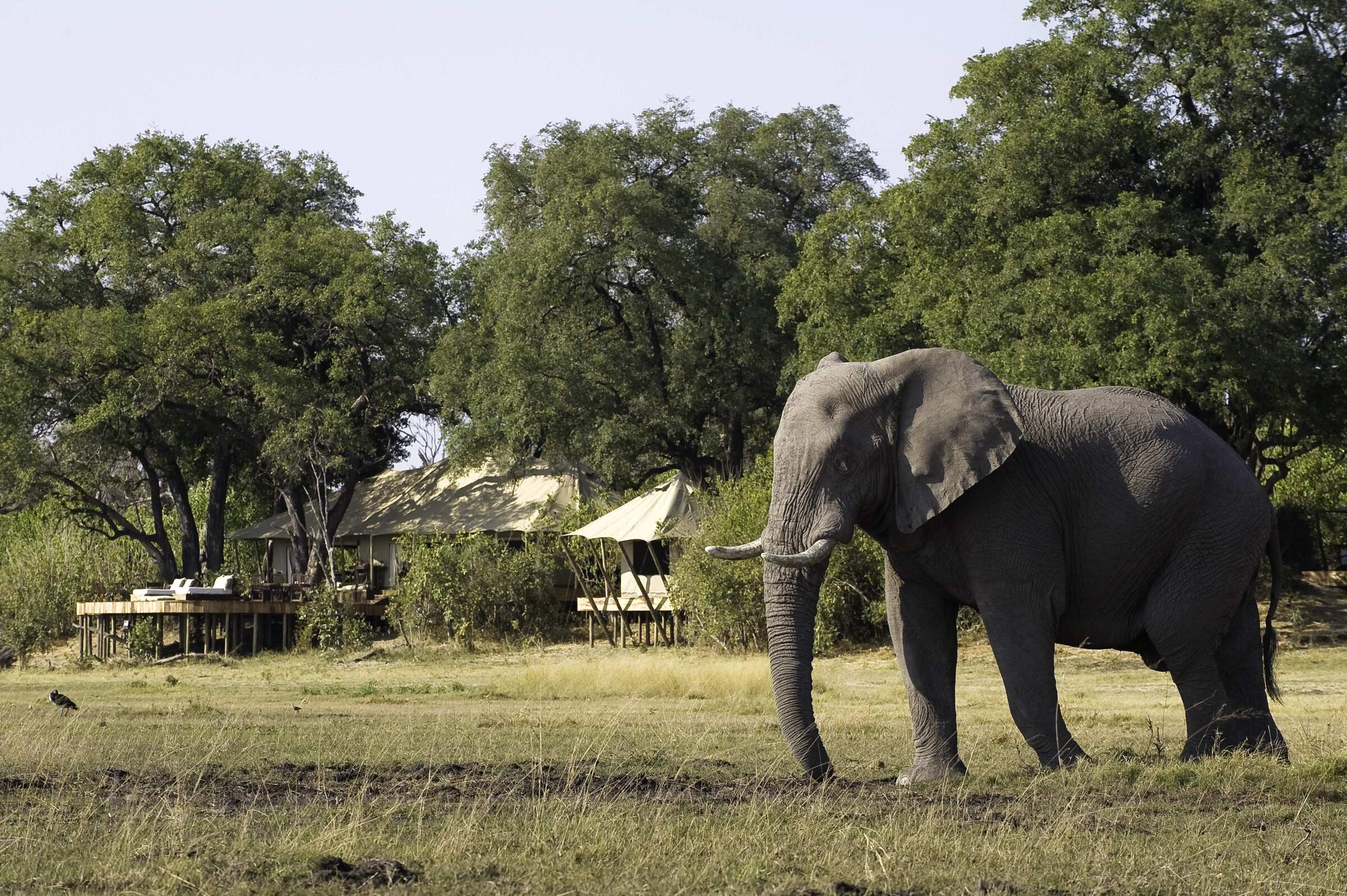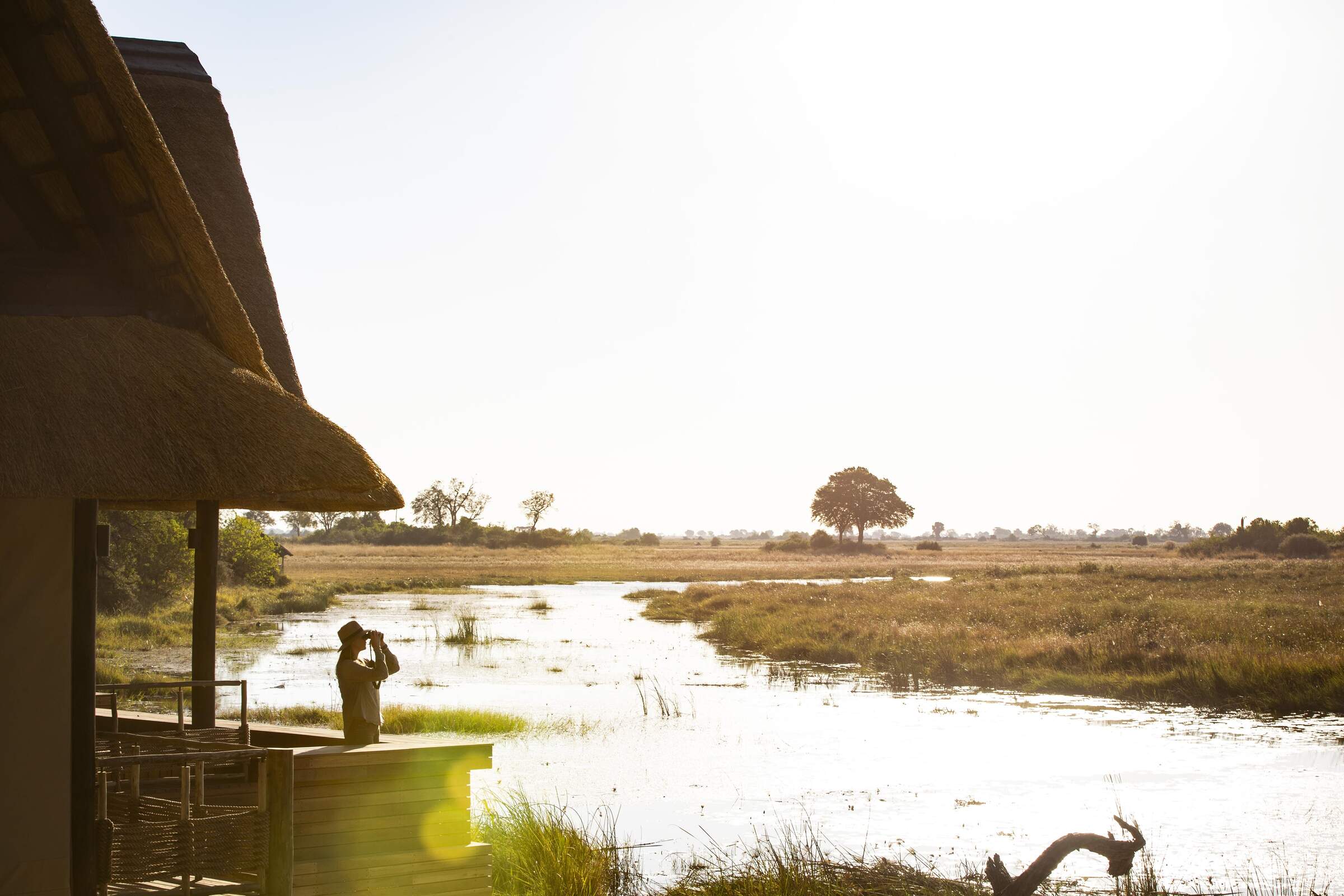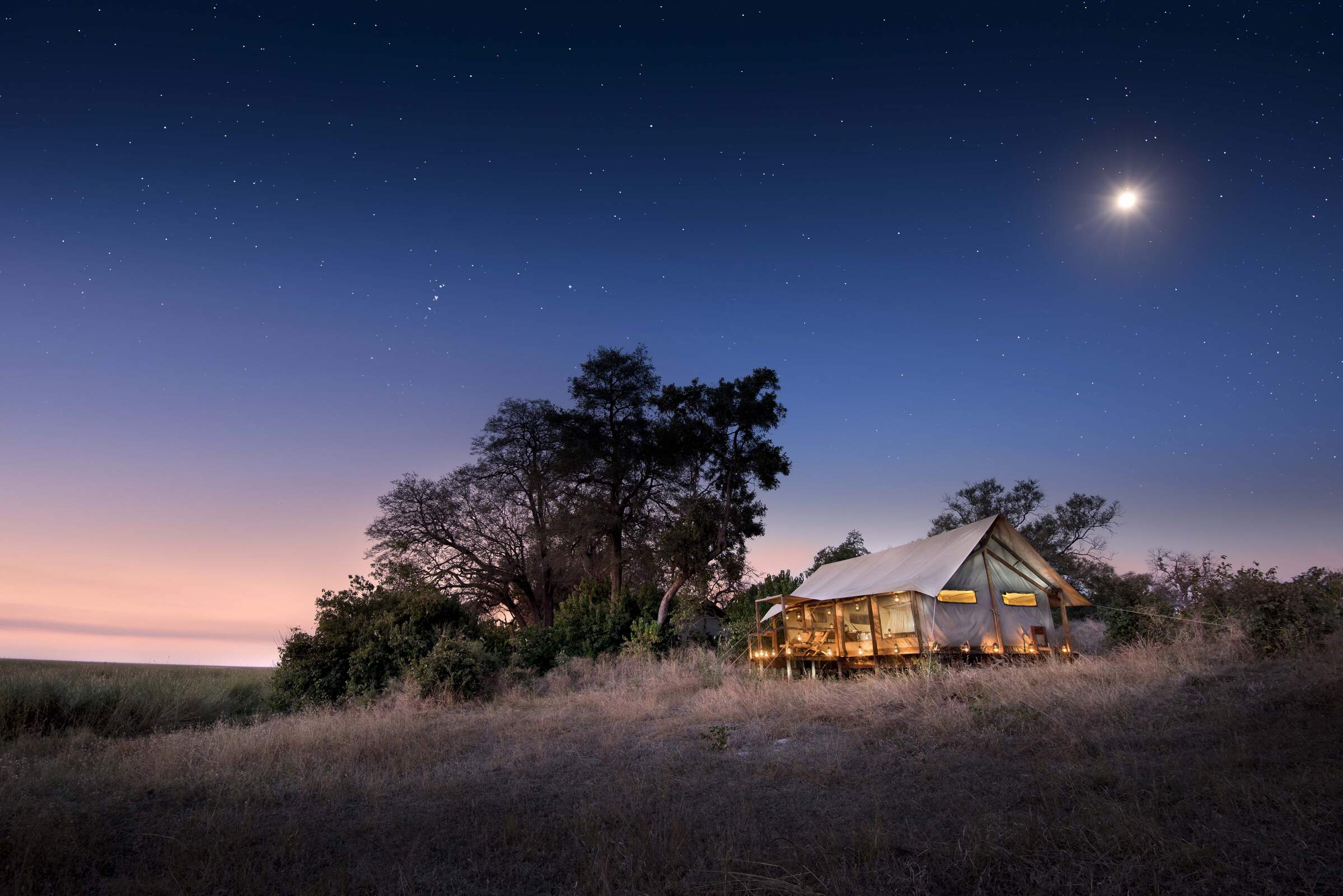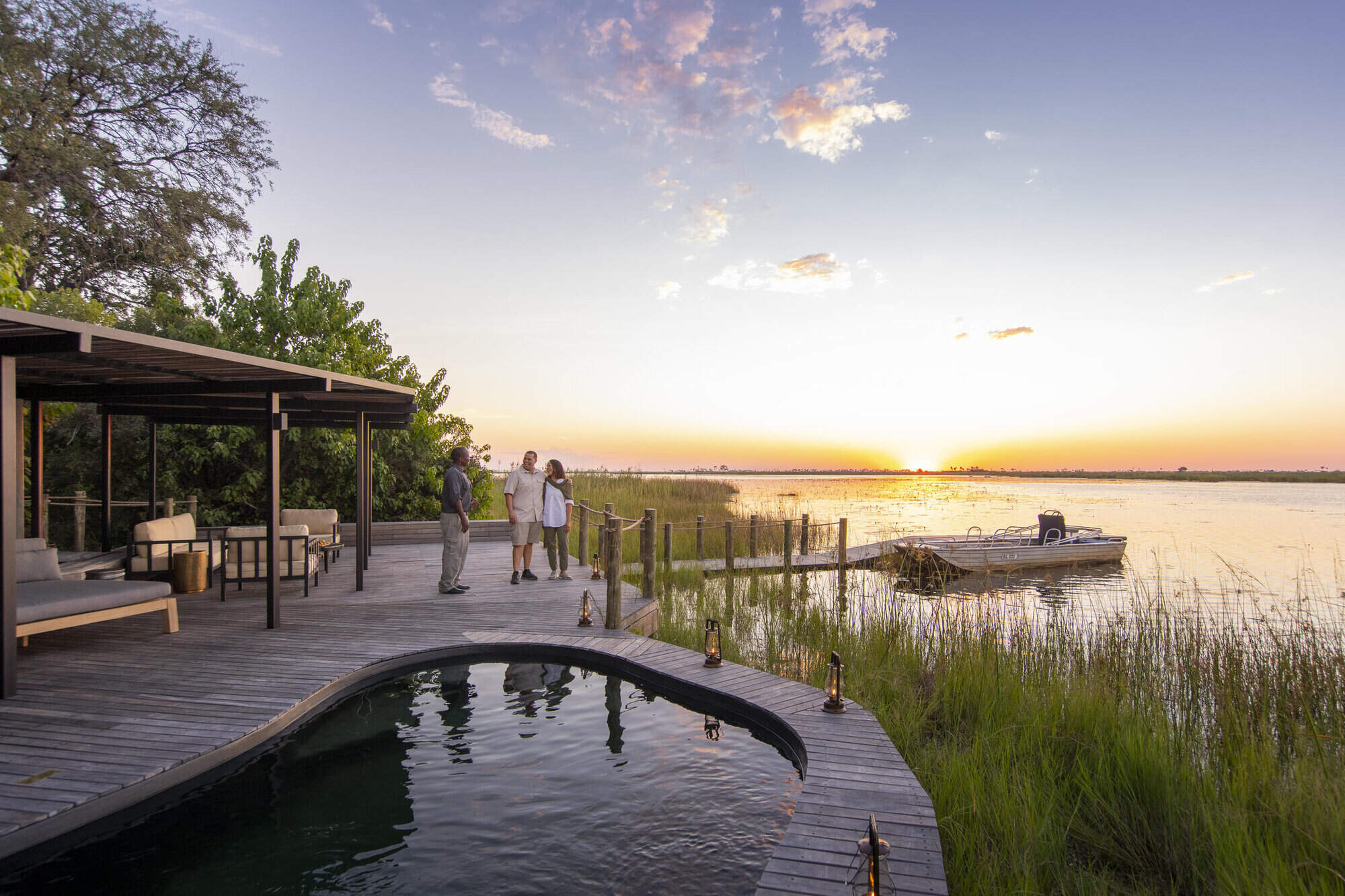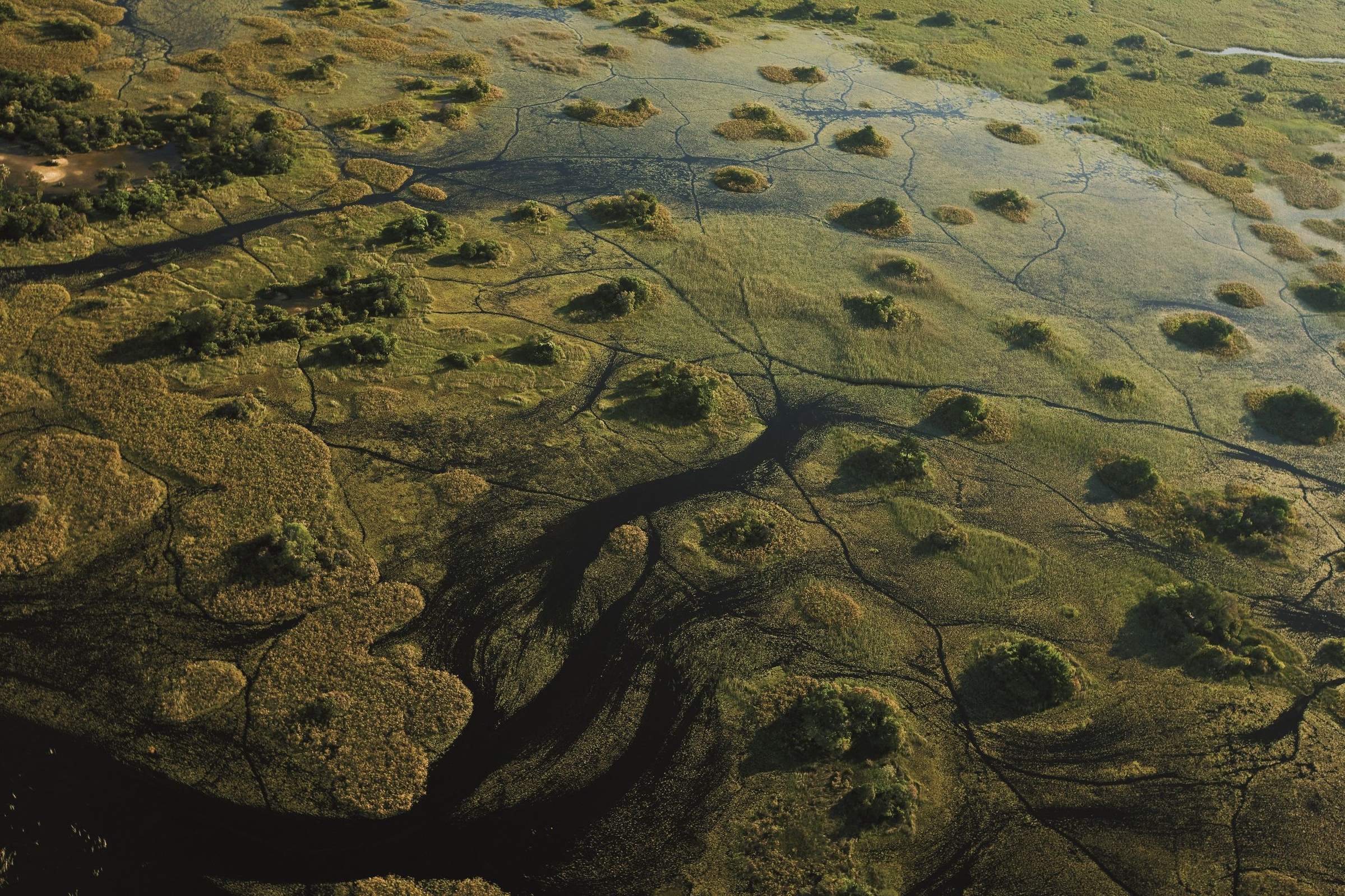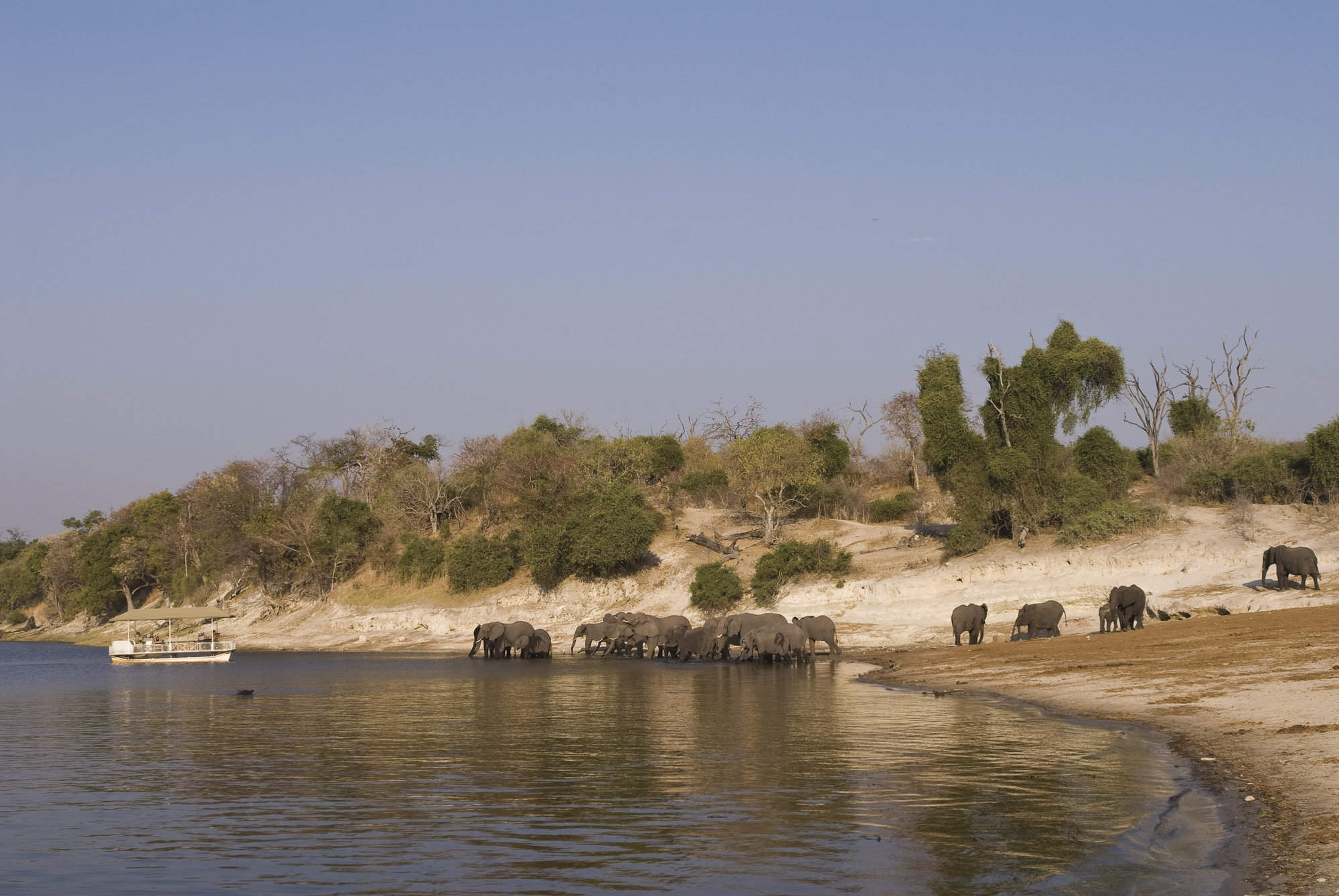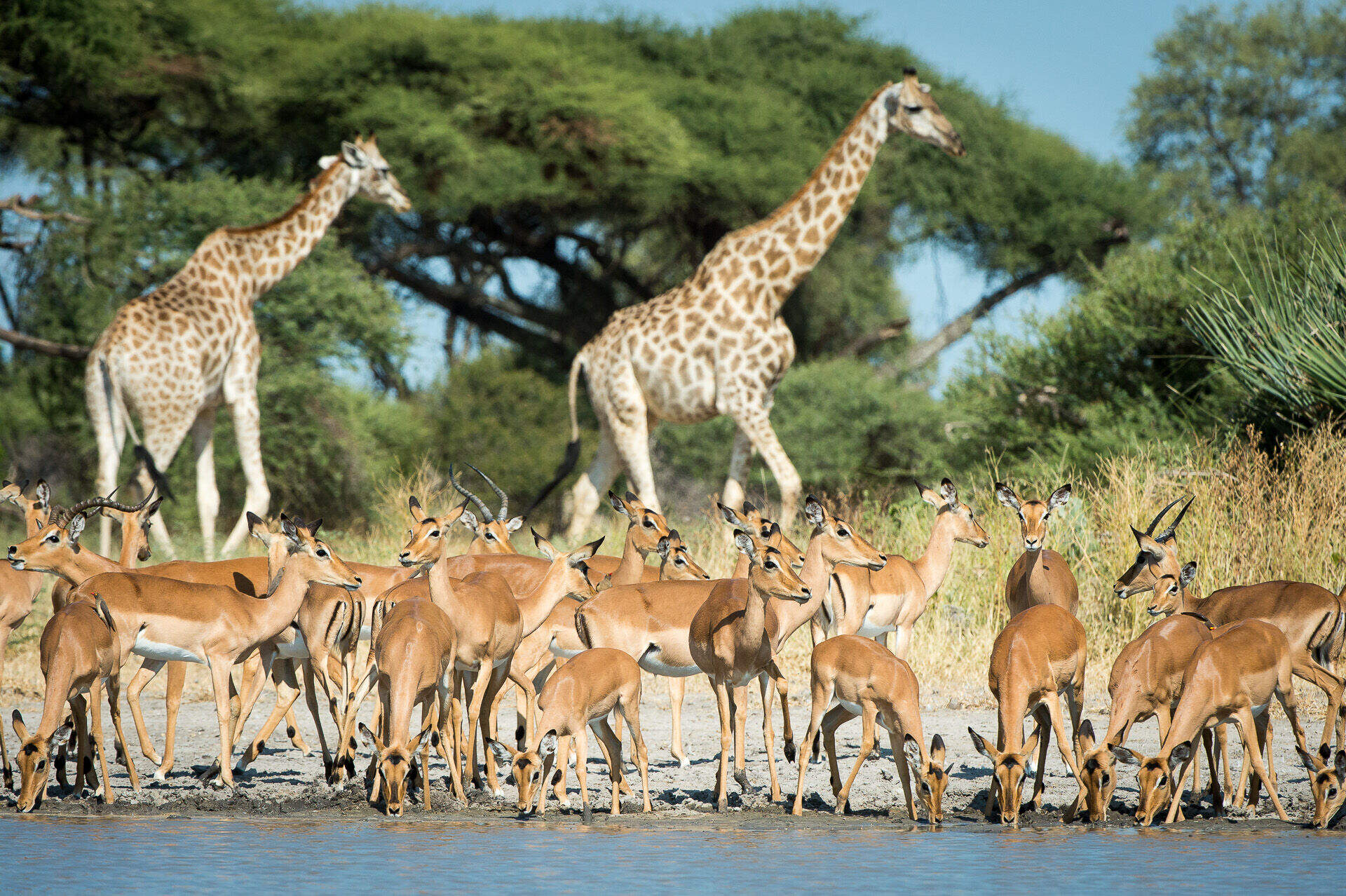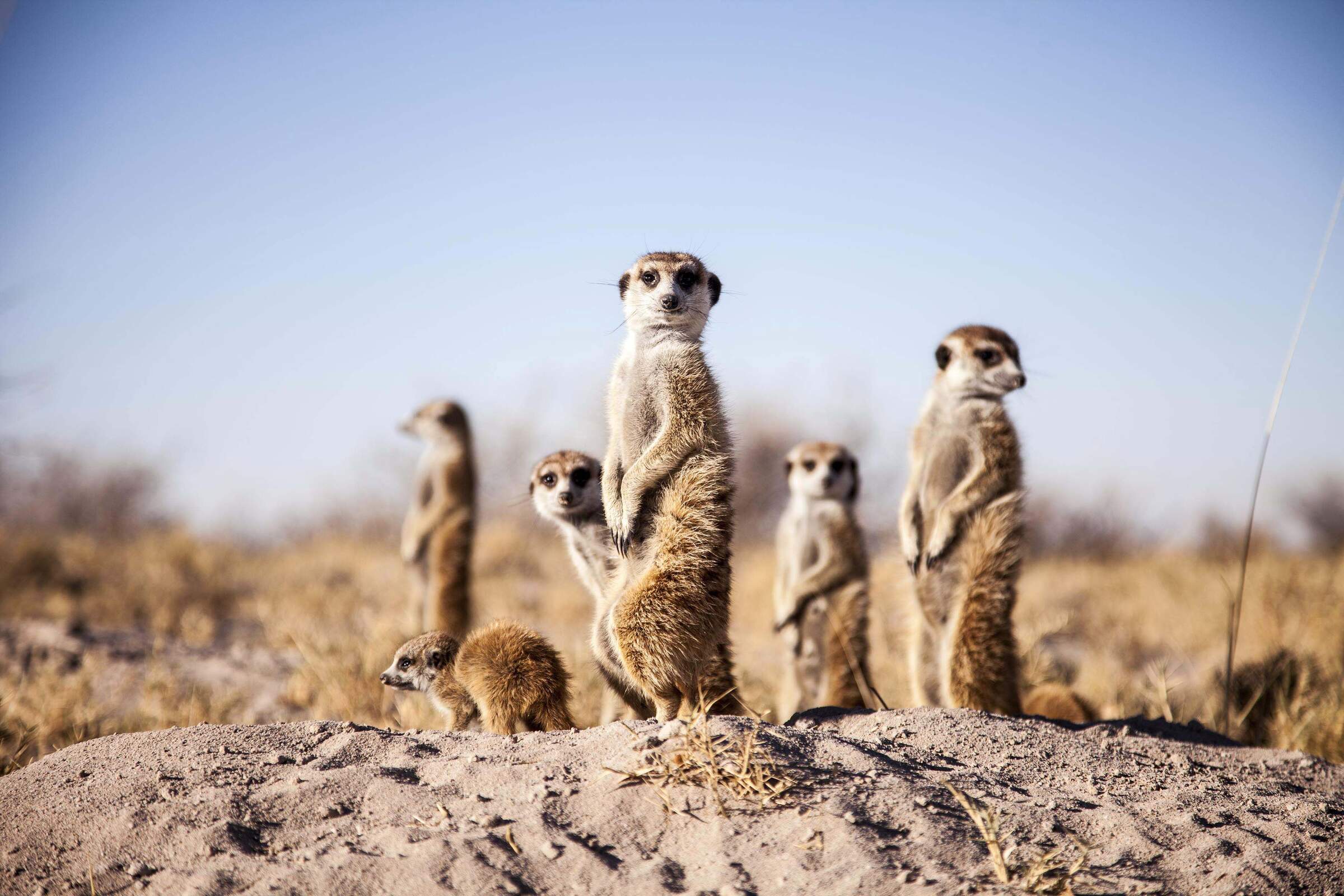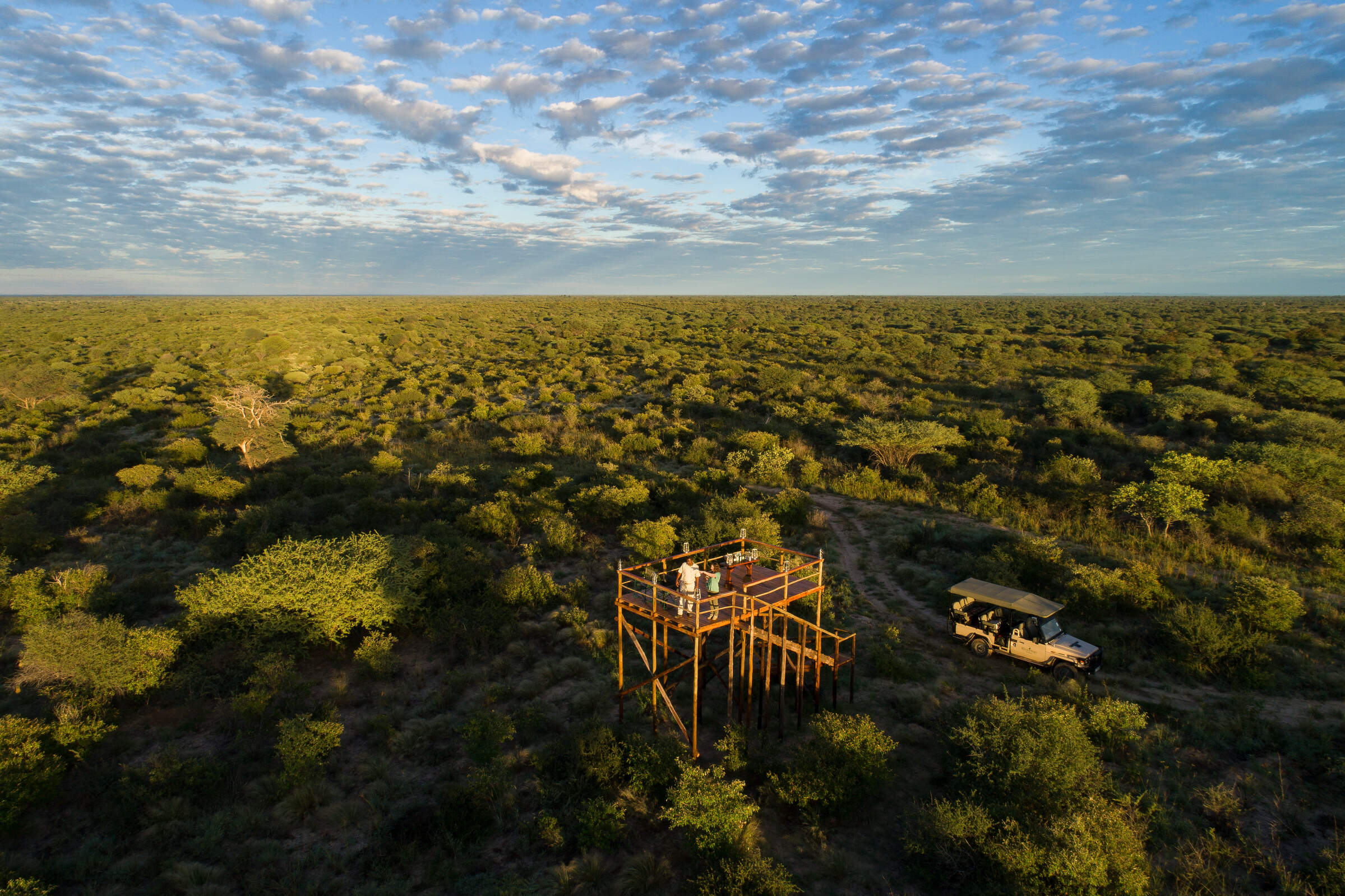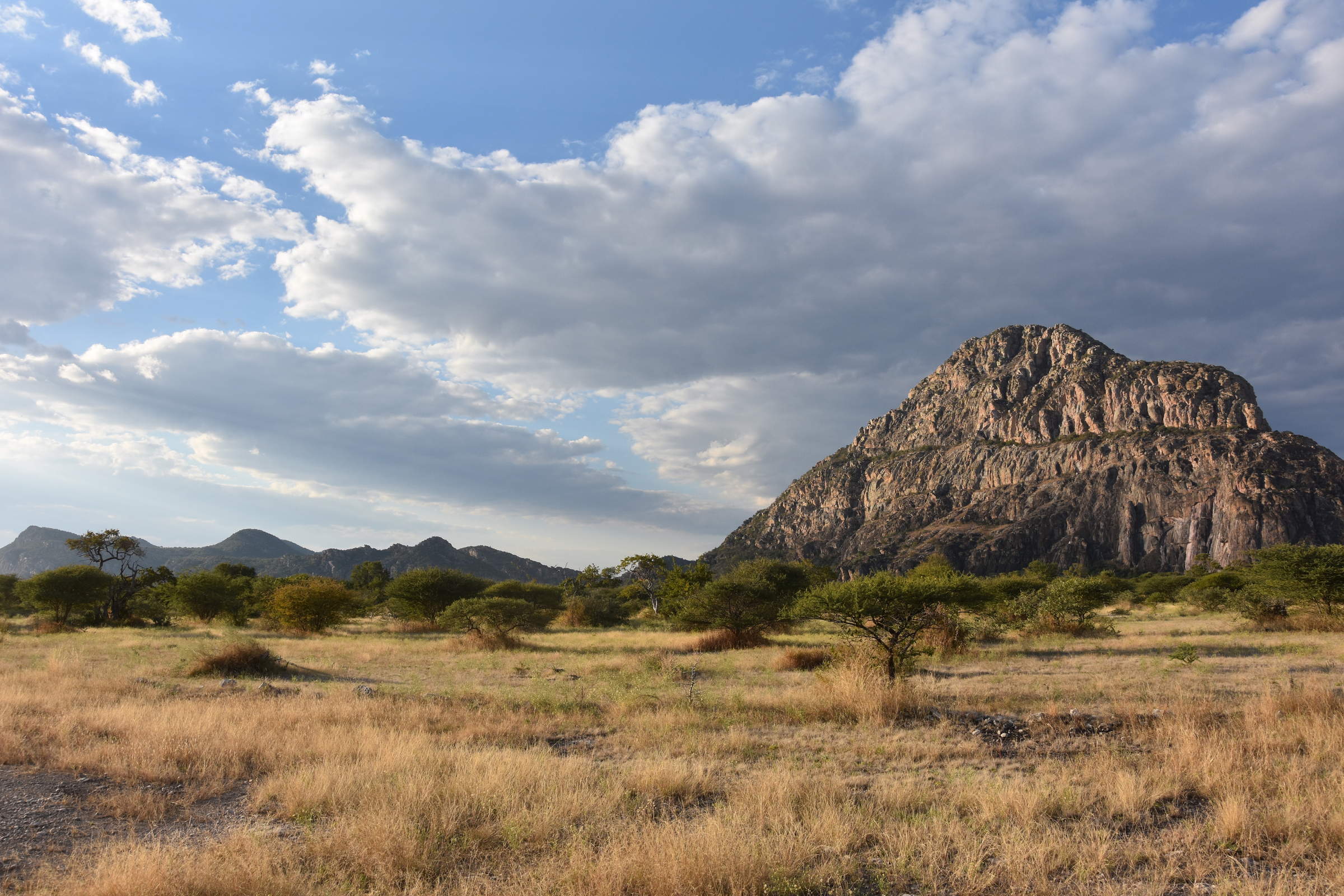Linyanti Bush Camp: Our full report
On the edge of the Linyanti Marshes, Linyanti Bush Camp stands in a private reserve known as the Chobe Enclave, ...
... bordering the western boundary of Chobe National Park. Like its adjacent sister camp, Linyanti Ebony, it offers comfortable tented accommodation in a traditional style that evokes the early explorer camps. The two are usually operated separately, but with their adjacent locations they can be combined for larger groups.The Linyanti Marshes were largely dry when Linyanti Bush Camp was built. Then, in 2008, heavy rains in the Kwando and Linyanti river catchments, combined with the suspected shifting of fault lines, caused the Linyanti River to flood onto the marshes. As a result, the Chobe Enclave is now a mix of wet and dry terrain. Reed- and grass-filled swamps stretch out in front of the camp, creating an open, though not particularly idyllic, outlook.
Watery lagoons and permanent river channels are popular with hippos and colourful birdlife; open grassy floodplains attract grazing herds; riparian woodland and thickets are ideal for lions to lay ambush; cathedral mopane forest conceals shyer animals like leopard; and dry scrubland interior suits browsers such as kudu, sable and roan. Then, between May and October, the area is frequented by large herds of elephant and buffalo.
Linyanti Bush Camp's founders, and current joint-owners, Beks and Sophia, have worked in tourism in Zimbabwe and Botswana for many years. Beks holds a Zimbabwean Professional Guides Licence, which combined with ample experience, makes him one of the best safari guides in the business. Their passion and knowledge filters through to their predominantly Botswana camp staff, so you'll usually find knowledgeable and enthusiastic managers and guides here.
Linyanti Bush Camp's intimate tented main area comprises a large, custom-made tent secured by wooden framework and raised on wooden flooring. Incorporating a dining room, lounge, bar and meeting point, it's simply furnished with comfy seating, bookcases, a dining table and a help-yourself drinks fridge behind the bar. A few local artefacts, old-fashioned pieces and worn travel chests add to the early-settler feel. To the front, a wooden deck provides a sunny spot to sit, and steps take you down to a sandy clearing with an open firepit encircled by chairs. Separately, a small swimming pool partially surrounded by sturdy poles is a delicious place to cool off while keeping an eye out for wildlife on the marshes.
Sandy paths lead from the main area to Linyanti Bush Camp's six walk-in tents, whose wooden decks – topped with a couple of chairs – front the Linyanti Marshes. Upgraded in 2016, and now entered through solid doors, each large tent offers understated comfort, with tasteful décor in pale neutrals, laminate flooring, and polished dark-wood furniture. There's a writing desk, comfortable sofa with footstool, and a sleigh-style bed decked with pillows, duvets, crisp linen and an overhead mosquito net. Bedside tables and lamps, a wooden chest-cum-luggage rack, a chest of drawers and a free-standing wardrobe with hanging space and a safe complete the set up. Guests are provided with mosquito coils, insect spray and repellent, chitenje bathrobes, drinking water, and a tea/coffee station. Note, however, that there are no facilities in the guest rooms for using hairdryers or charging electronic equipment (items can be charged in the main area).
Mesh windows help keep bugs out and the canvas flaps can be rolled up to let a cooling breeze through. Ventilation is enhanced by small windows in the roof, with a free-standing fan helping to cool the tents during the hotter months.
The en-suite bathrooms are set through a doorway in the canvas wall. To one side of the wooden washstand and basin with overhanging mirror is a flush toilet, which can be screened by a free-standing partition; to the other, a large rain-head shower with plenty of hot and cold water takes in the view. There's also a laundry basket, fluffy towels and toiletries, including shampoo, shower gel and body lotion.
Linyanti Bush Camp benefits from an unusual and flexible range of activities, led in our experience by excellent guides. Along with 4WD game drives (day and night) and guided walks there are – when water levels are permitting – mokoro trips. And if you stay for 3 nights between April and November, there’s the real bonus of a helicopter flight!
Unfortunately, on our July 2016 trip, the water was too low to try any of the water-based activities, as the Linyanti Marshes did not flood. Nevertheless we had some enjoyable sightings with plenty of elephant, zebra, waterbuck and baboons, and dozens of fish eagles that had gathered to take advantage of the catfish bonanza in the muddy marshes. And during a later stay, in October 2017, a mokoro trip proved to be a magical way to spend an early morning on the marshes.
The 4WD excursions reveal a range of habitats within the Chobe Enclave, and day trips to the Savuti Marsh are also available on request for guests staying three or more nights. The walks offer a closer look at flora and fauna and the thrill of seeing wildlife on foot, under the watchful eye of an armed guide.
One of the real highlights of our stay here was the helicopter flight over the marshes. To be able to see the habitat from an aerial perspective offers new insight into the surrounding ecosystem as well as some great game-spotting opportunities – we saw elephant, buffalo, giraffe, a couple of large pods of hippo lying in the mud and some very big crocodiles. This is a totally different kind of safari experience and we loved it! A helicopter flight is included for all guests of Linyanti Bush Camp staying a minimum of 3 nights between April and November.
Our view
Linyanti Bush Camp will suit safari enthusiasts looking for an authentic tented camp offering understated comfort and an emphasis on adventure. Intimate and relaxed, it offers warm, homely service with varied activities and usually first-rate guiding. There's wildlife here year round but densities increase greatly in the dry season (May to October) when transient game congregates around the permanent waters of the Linyanti River.
Geographics
- Location
- Kwando-Linyanti area, Botswana
- Ideal length of stay
- We recommend a three-night stay at Linyanti Bush Camp to experience the mixture of activities and the varied terrain.
- Directions
- Linyanti Bush Camp is reached by light aircraft into Saile airstrip (1 hour from Maun and 35 minutes from Kasane). It’s then roughly an hour’s drive to camp, depending on time spent game viewing on the way.
- Accessible by
- Fly-and-Transfer
Food & drink
- Usual board basis
- Full Board & Activities
- Food quality
- We found the food at Linyanti Bush Camp to be simple, wholesome and very tasty. Meals are served as a buffet or set menu and guests generally dine together.
On our last visit we arrived in time for lunch – a light but satisfying mix of tempura beef goujons, a delicious noodle salad, green salad, cheeses with homemade chutney and fresh bread, and fresh fruit for dessert.
Before the afternoon activity afternoon tea is served in the main area. We had a fabulous banana bread and tempting Mexican quiches, served with tea and coffee.
A couple of times a week dinner is a very sociable affair that combines guests from both Linyanti Bush Camp and Linyanti Ebony. This is often for a traditional night or braai (barbecue).
As it happened, our last visit coincided with the traditional evening, where we enjoyed a buffet of beef seswa (a thick shredded beef stew), chicken stew, rice, semp (pounded corn), braised cabbage and green salad. Dessert was a milk tart.
Breakfast was a range of continental options from the buffet plus a hearty full English breakfast to order. - Dining style
- Group Meals
- Dining locations
- Indoor and Outdoor Dining
- Drinks included
- A good selection of drinks is included in the cost. Exotic or premium brands and champagne must be arranged in advance, and will be charged extra.
Special interests
- Birdwatching
- Highly knowledgeable guides and a mix of wet and dry environments makes Linyanti Bush Camp an excellent addition to a birdwatching holiday. We noted a particularly wide variety of raptors and owls, in addition to bee-eaters and kingfishers.
- See ideas for Birdwatching in Botswana
Children
- Attitude towards children
- Linyanti Bush Camp welcomes children from the age of 7 years. However, children under 16 years are not permitted on mokoro trips or walking safaris (though they can join nature walks around camp). Families with younger children may wish to consider Linyanti Ebony, which is adjacent and has a family tent.
- Special activities & services
- No special activities or services are provided for children.
- Equipment
- No equipment for children is provided.
- Generally recommended for children
- We would recommend Linyanti Bush Camp for children aged 7 and over, with a genuine interest in wildlife.
- Notes
- The camp is unfenced and wildlife does occasionally pass through; hence children must be under the constant supervision of their parents.
Our travellers’ wildlife sightings from Linyanti Bush Camp
Since mid-2018, many of our travellers who stayed at Linyanti Bush Camp have kindly recorded their wildlife sightings and shared them with us. The results are below. Click an animal to see more, and here to see more on our methodology.

100% success

100% success

100% success

100% success

67% success

33% success

33% success

33% success

33% success

0% success

0% success

0% success

0% success

0% success

0% success

0% success
Communications
- Communications
- For all intents and purposes you should consider yourself out of contact here. There is no telephone or internet, though those with roaming may pick up a weak cellphone network from across the Namibian border. In an emergency, radio contact can be made with the head office.
Sustainability

The Kachikau Sewing Factory in the Chobe Enclave
Representing the African Bush Camps Foundation (ABCF) in the Chobe Enclave, Linyanti Bush Camp is committed to empowering local communities through education, trade and conservation.
In Kachikau, members of the village started a uniform-making factory to overcome the challenges Chobe Enclave Community is facing in acquiring school uniforms for children. These need to be ordered in Kasane and collected in approximately 3 weeks. Locals are determined to set up their own factory, a project that will be supervised by a committee of nine people from the village and supported with technical expertise from the foundation and other key stakeholders in the Enclave. In making their dream come true, two skilled seamstresses have already offered their help and ABCF is raising funds to purchase the first 5 sewing over-locking machines and related equipment as well as assisting with initial training of the staff. Additional to school uniform, the new factory will also manufacture the traditional Tswana dress which will be sold to visitors.
The Vuche Vuche Craft Project Mabele is another initiative by the Vuche Vuche Basket Weaving Co-operative which began in 2011 and aims to create employment for women.
There are currently 20 women engaged in the program and profits go towards building their first craft shop as well as covering basic necessities such as food and education for children.
See more great sustainability projects in Botswana
Health & safety
- Malarial protection recommended
- Yes
- Medical care
- Managers and guides are first-aid trained, and a comprehensive first-aid kit is kept in camp. In an emergency, the camp can arrange medical evacuation to Maun. Please note that it is only possible to fly out of camp during daylight hours as the bush airstrips do not have any lighting at night.
- Dangerous animals
- High Risk
- Security measures
- Due to the presence of potentially dangerous wildlife, guests are escorted to their tentsafter dark. Whistles are provided in the tents to raise the alarm in case of an emergency.
- Fire safety
- There are fire extinguishers in the common areas and outside each tent. There’s also a firebreak around camp as a precaution against bush fires.
Activities
4WD Safari
Birdwatching
Guided walking safari
Helicopter
Mokoro
Night drive
Private activities
Extras
- Disabled access
- On Request
- Laundry facilities
- A full laundry service is included.
- Money
- There is a small safe in each tent. The camp does not offer any money-exchange facilities.
- Accepted payment on location
- Everything is pre-paid and included; no payments are required at the camp and there are no credit-card facilities.
Other lodges in Kwando-Linyanti area
Alternative places to stay in this same area.










